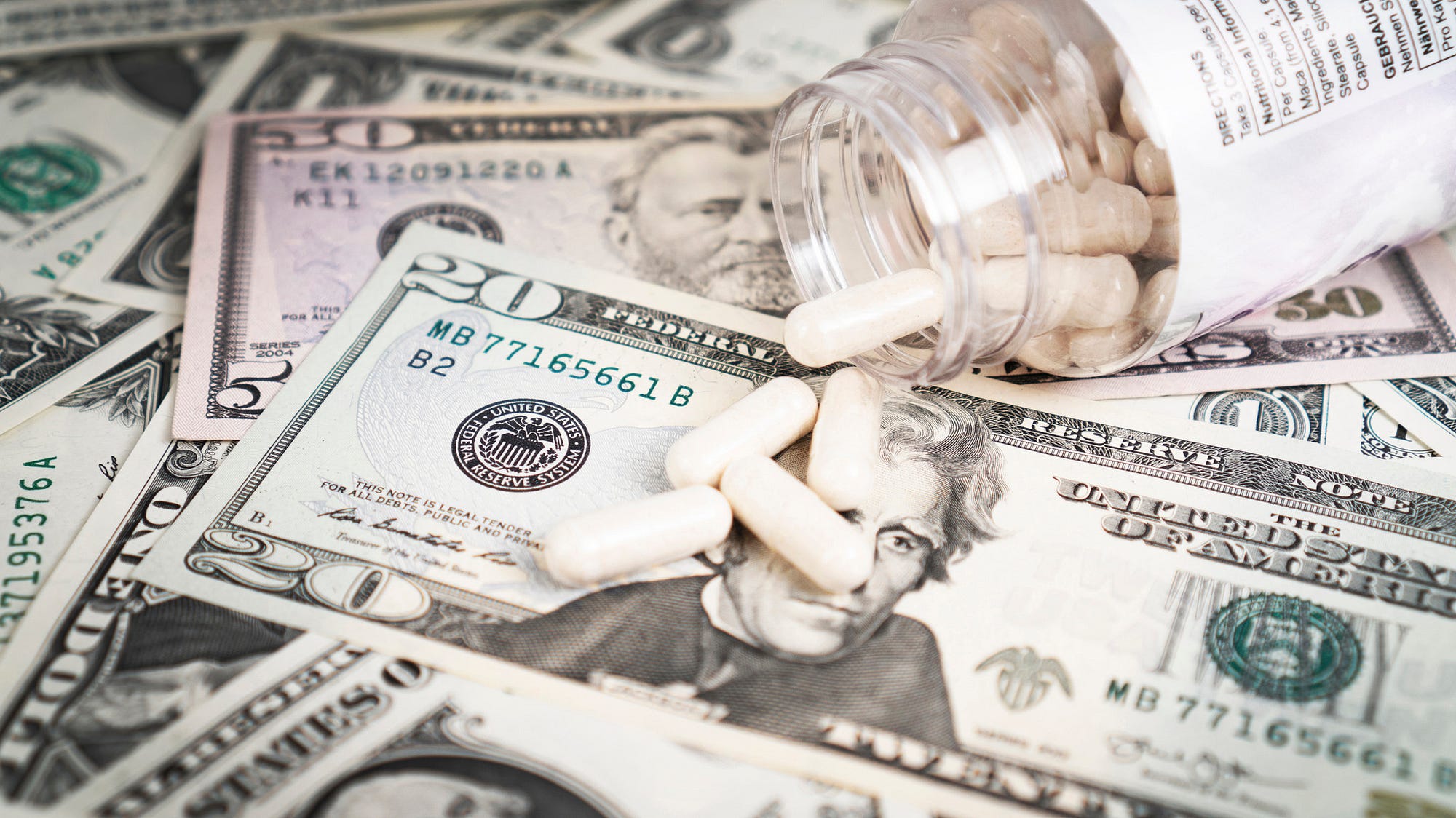How Economic Incentives have Created our Dysfunctional US Medical Market

What you’ll see is that the economic forces and incentives that motivate our health system often lead to medical practices that are not especially good for our health — or our wallets.
In my new book “An American Sickness: How Healthcare Became Big Business and How You Can Take it Back,” I began with a list of 10 Economic Rules that seem to govern the Dysfunctional U.S. Medical Market. Some readers reacted with disbelief: How could such seemingly callous and absurd-sounding principles form the underpinning of something as precious as our healthcare? So here, I’ve illustrated each of the 10 rules with some real-life examples from the book to show you how they do, indeed, come into play.
1 - More treatment is always better. Default to the most expensive option. The most expensive treatment for the most common benign type of skin cancer is a complex technique called Mohs surgery, in which skin is sliced off sequentially and analyzed after each cut. It is frequently followed by plastic surgery with resulting total charges often in the tens of thousands. Mohs can be highly useful in delicate areas like an eyelid, but it is now far more widely deployed. In most body locations such basal cell carcinomas can be cured with a host of cheap and quick treatments: burning, cautery, simple excision or applying a caustic cream. Nonetheless, the rate of using the expensive techniques rose 700 percent among Medicare beneficiaries between 1992 and 2009. The decision to use MOHs often likely reflects “the economic advantage to the provider rather than a substantial clinical advantage for the patient,” one prominent dermatologist told me. (Patients: If a doctor recommends Mohs, ask instead about the cheaper treatments!)
2 - A lifetime of treatment is preferable to a cure. Medically this sounds crazy. But financially this is a no-brainer: Type 1 Diabetes is a lifelong serious disease?—?as well as the basis of an industry worth billions, providing pumps, monitors and ever-more-expensive versions of insulin. Pharma has little incentive to finance research for cures to a disease that has created such a lucrative market. The book outlines the travails of Harvard Professor Dr. Denise Faustman, whose lab is researching a cure using a generic drug. Pharma declined to fund her work. “They said, ‘It’s really interesting but we’ve got a problem: Tell us how it will ever make us money?’” From the manufacturers’ standpoint, if diabetes could be cured there was no need for insulin, pumps, and monitors?—?all extremely lucrative products.
3 - Amenities and marketing matter more than good care. In Europe most hospitals look like junior high schools; in the U.S., hospital lobbies resemble 5-star hotels. Henry Ford West Bloomfield Hospital hired a hotel industry executive to upgrade its services and the “guest experience,” turning a once financially failing hospital around. That’s what brings in patient business. But none of that luxury correlates very well with the quality of care. When Paul Levy, formerly CEO of a major Boston hospital, told his board that he wanted to study infection rates, it balked. Why would a hospital want to uncover that? How much do you know about your hospital’s infection rates after surgery? Its 5-year survival rates after cancer treatment? The cost of a day in the ICU? Whether the ER doctors are in your insurance network? (Note to patients: Forget the art and free coffee, this is where we should focus attention.)
4 - As technologies age, prices can rise rather than fall. Between 2010 and 2015, the recommended wholesale price of different forms of insulin rose 127 to 325 percent. The monthly wholesale price of Humulin, the most popular insulin, has risen to nearly $1,100, up from $258 for the average patient between 2012 and 2015. One big reason: Patent protection and patent lawsuits have left one company cornering the market for the most popular form of the drug. Suffice it to note, also, that an echocardiogram, a sonogram of the heart, costs anywhere from about $1,000 to $8,000 in the U.S. In Japan, where regulators insist that the price charged for new technology decreases as it ages, it is now under $150.
5 - There is no free choice. Patients are stuck. And they’re stuck buying American. When your doctor tells you that you need a blood test, his computer is likely programmed to send your blood to his hospital’s lab — you’re pretty much captive and have no simple way to shop for a cheaper service. Likewise, even if you know your medicine is far cheaper overseas, it is illegal to import them, as you might for a car or flat screen TV. (Note to patients: Feel entitled to ask your doctor to send your blood to an outside commercial lab that is in your insurance network. I now do?—?it will save a lot of money.)
6 - More competitors vying for business doesn’t mean better prices; it can drive prices up, not down. When insurers negotiate discounts on hospitals and physician prices, they often use a standard called “usual and customary” to determine what is reasonable to reimburse in a given zip code. But if lots of providers in that area are charging high prices, then “usual and customary” doesn’t equal “reasonable.” Instead it equals “inflationary.” The result: in 2014 the “usual and customary” surgeon’s fee for gall bladder surgery in Queens, New York, was about $2,000, but twenty miles east in Nassau County, Long Island, where more doctors are in private practice, it was $25,000. (Note to patients: For elective procedures, look a little further afield online medical pricing websites.)
7 - Economies of scale don’t translate to lower prices. With their market power, big providers can simply demand more. Sutter Health’s Mills Peninsula Hospital billed about $122,000 for Susan Foley’s knee replacement, a price which did not even include any physicians’ fees. Her insurer paid the hospital $54,000. A knee replacement is a fairly standard procedure and studies have concluded that about $35,000 is a reasonable all-inclusive price that many high quality centers will accept. One big reason Sutter Health’s Mills-Peninsula Medical Center can get away with really high prices is because it is by far the biggest health system in Northern California?—?a near monopoly in some areas, thanks to serial acquisitions and takeovers of other healthcare institutions. Studies show that one dominant healthcare system can result in price increases as high as 40 to 50 percent. Premiums are 9 percent higher in San Francisco, Sutter Health territory, compared with those in Los Angeles, even though the latter boasts high-end hospitals like Cedars-Sinai and Ronald Reagan UCLA Medical Center, because there are more players in the southern market.
8 - There is no such thing as a fixed price for a procedure or test. And the uninsured pay the highest prices of all. Patients who have insurance are lucky enough to have insurers’ do at least some negotiation on their behalf. An insurer’s contract with a hospital may stipulate that they’ll pay, say, $30,000 or $54,000 or $75,000 on a highly inflated $122,000 “list price.” But what happens to people who don’t have insurance and insurance negotiators in their corner? The book recounts the ordeal of Wanda Wickizer, who had a bleed in her skull just a week before the Affordable Care Act took effect, and was uninsured. The hospital billed her over $350,000 for her 3 weeks as an inpatient?—?and took her to court to pay it, though she “didn’t have that kind of money.” Medicare would have paid under $100,000 for the same services.
9 - There are no standards for billing. There’s money to be made in billing for anything and everything. Creative attempts at revenue capture are legion in our system. These are actual charges from bills that patients have contributed: A $17 Tylenol pill in the hospital. A $98 ice pack applied during physical therapy. A $70 additional “mileage charge” for a 15-minute ambulance ride. A $10,000 “trauma team activation fee,” when a triage nurse summoned surgeons to the emergency room. A $1000 “rooming-in charge” to a mother who opted to keep her newborn in her room, rather than having him admitted to the new-born nursery.
10 - Prices will rise to whatever the market will bear. The mother of all rules! Jeffery Kivi had long gotten monthly outpatient infusions of a drug to treat his autoimmune disease for about $19,000. But when his rheumatologist moved her affiliation to another hospital, 20 blocks uptown, infusions of the very same drug were billed at up to $132,000. And the still bigger shocker for Mr. Kivi was that his insurer came through with almost all of the cash, close to $100,000. “I was stunned when the first infusion bill finally showed up on my account,” Mr. Kivi wrote to me. “I couldn’t believe my eyes!! This was for the same drug at the same dosage as I’d always gotten. Nothing had changed.” Prices rise to whatever the market will bear.
These are only some of the many stories that I’ve heard directly from patients all over the U.S. that happen every day. And they will continue to. My hope in giving your stories a platform and calling out the perverse economic incentives that have created this dysfunctional system is to educate and become a rallying point for better and more affordable health care. Join me and the revolution at www.wethepatients.us!
My hope in giving your stories a platform and calling out the perverse economic incentives that have created this dysfunctional system is to educate and become a rallying point for better and more affordable health care.
=============================
There may be links in the Original Article that have not been reproduced here.











The business of Big Business, including Big Healthcare, is to make money for the shareholders and top management. The product or service produced is not the purpose. The customer for that product or service is not the purpose.
If more money can be made for dividends and top management remuneration, by means that are negative for the product/service or the customer, that is not a problem.
It is insane to confide the nation's health to companies for whom the nation's health is only a secondary consideration.